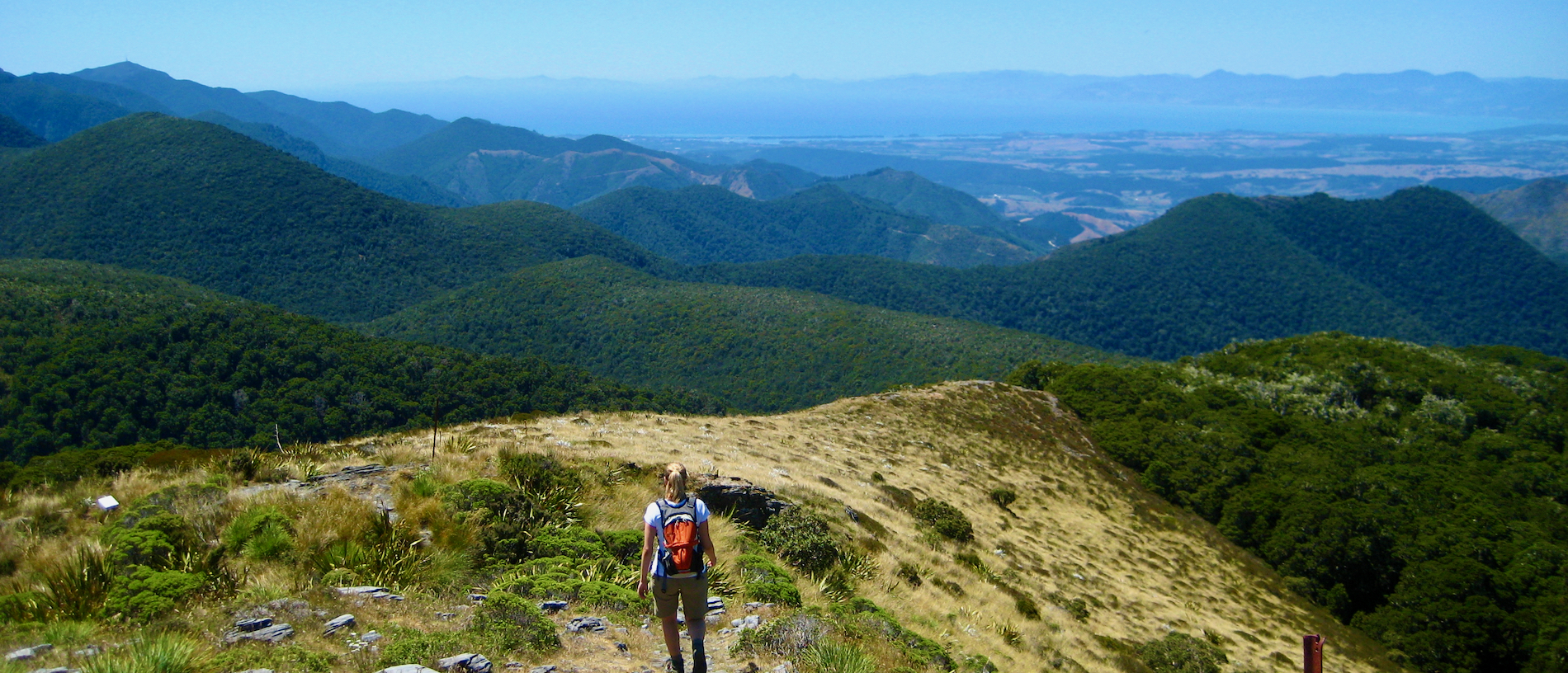
Kahurangi Marine Reserve
North of Kahurangi Marine reserve is a remote wilderness visited more by seals than humans.

Kahurangi is New Zealand’s second largest national park – but it needs to be big to squeeze in the famous Heaphy Track, the Ōpārara Basin complex of limestone caves arches and channels, and 1795 metre high Mount Arthur.
Nowhere else in New Zealand has such a complex series of ancient rocks been eroded into such distinctively different landscapes, creating a series of caves, arches and channels for the keen explorer or fossil-hunter.
Located in the northwest corner of the South Island, Kahurangi is in places an untracked wilderness, while elsewhere a network of walking tracks lets visitors explore wild rivers, alpine herb fields and coastal forests. Just watch out for the carnivorous snails!
Kahurangi means ‘treasured possession’, and is also a type of clear, translucent pounamu (greenstone) without flaws. This demonstrates how strongly Māori value the area, the rocks, the plants and the rare birds.
Kahurangi National Park is far enough north and at a low enough altitude to have escaped the worst effects of recent ice ages. As a result, many plant species found refuge there and its flora is the most diverse of any national park. There are endless species to spot, but some of the highlights are the South Island edelweiss, the bright yellow Māori onion, and the giant spaniards, whose flower spikes top a metre in height.
This diversity provides a perfect habitat for wildlife, and a wide range of birds find a home in the park, including the blue duck, falcon, rock wren and great-spotted kiwi. The park is also the main bastion of powelliphanta, a group of carnivorous native land snails that grow up to 10 centimetres in diameter.
Mount Arthur (Wharepapa) is made of hard, crystalline marble, transformed from limestone, originally laid down under the sea some 450 million years ago.
Below ground are some of the deepest shafts and most intricate cave systems in the country, and exploration of these is far from finished.
Parts of Kahurangi were occupied by Māori from the fourteenth century and the coast was much travelled by those seeking pounamu. In 1846 Charles Heaphy, a draughtsman with the New Zealand Company, and surveyor Thomas Brunner were the first Europeans to tramp the northwest coast of the park. Later, well-worn pack tracks were built by those wanting easy access to the Aorere goldfield, New Zealand's first gazetted goldfield.
In 1863, Thomas Salisbury was the first European to find the Mount Arthur Tableland. Gold was discovered there in 1865, and diggers braved harsh conditions for a few years before interest waned. In 1886, 1909 and the 1930s gold fever spread again, but always with little success.
The Mount Arthur area in Kahurangi National Park is home to the Ellis Basin cave system, the deepest cave in the Southern hemisphere, and the Nettlebed Cave. The Cobb Valley region is one of the most interesting in the country for trampers and naturalists, and the Ōpārara Basin is a complex of limestone caves, arches and channels that is 35 million years old.
Mount Owen and Mount Arthur are the park’s ‘marble mountains’. Within these hills, water has dissolved the marble to create extensive cave systems. Stunning panoramic views reward those who climb to the summit of Mount Arthur, too.
The park’s amazing landscapes attract fossil hunters, cavers and anyone interested in geology – fluted rock, arches, sinkholes, shafts and disappearing/reappearing streams create a fascinating landscape. A 540 million-year-old fossil, New Zealand’s oldest, was found in the park.
The Heaphy Track is the park’s most famous and most accessible walk. Around 4,000 walkers do this Great Walk every year, over three to five days. The route was originally used by local Māori for hundreds of years on their way to the pounamu resources of the West Coast.
There are also a number of walks for the day-tripper. Kahurangi National Park was a location for Dimrill Dale and the outcrop south of Rivendell in the Lord of the Rings film trilogy, so fans of the movie can track down these locations.
Wild rivers are a feature of the park. Many are suitable for experienced kayakers only, but commercial rafting tours are available. The Karamea River is also known for good trout fishing.
Kahurangi is one of the few national parks where mountain biking is permitted, on three trails, including the Heaphy during the off-season.
Red and fallow deer are the main animals hunted in the park. There is also some good fishing to be had in the Wangapeka and upper Karamea Rivers.